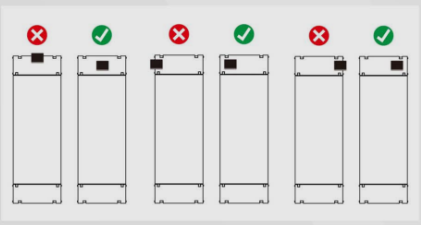Safety Operation Skills of Small Scissor Lifts
2022-05-26
During vehicle maintenance and repair processes, the scissor lift is used very frequently. Although the scissor lift is simple to operate, all safety inspections and precautions are indispensable; otherwise, safety accidents are likely to occur. The safe operation specifications for the scissor lift are described below. Safety is no small matter. We should always hold a reverent attitude towards safety. It is hoped that through the introduction of this article, everyone can understand the safe operation specifications of the scissor lift, thereby preventing risks and protecting the safety of people and vehicles.
1. Safety Inspections Before Lifting
Safety inspections before lifting are important steps to ensure the normal operation of the equipment and avoid potential safety hazards. The specific inspection methods are as follows:
(1) Turn on the power combination switch, operate the 上升 (ascend) button, and check whether all buttons are sensitive in contact and can reset automatically. The lift should stop as soon as the hand leaves the button.
(2) Operate the lift with no load. Press the ascend button and visually check whether the two platforms lift synchronously. The platforms on both sides must run synchronously to ensure that the vehicle will not tilt.
(3) Check whether the safety lock is sensitive and effective and can reset automatically.
(4) Check whether all oil pipe joints and valves are leaking oil.
(5) Check the limit switch and ensure that the limit switch makes effective contact.
(1) Turn on the power combination switch, operate the 上升 (ascend) button, and check whether all buttons are sensitive in contact and can reset automatically. The lift should stop as soon as the hand leaves the button.
(2) Operate the lift with no load. Press the ascend button and visually check whether the two platforms lift synchronously. The platforms on both sides must run synchronously to ensure that the vehicle will not tilt.
(3) Check whether the safety lock is sensitive and effective and can reset automatically.
(4) Check whether all oil pipe joints and valves are leaking oil.
(5) Check the limit switch and ensure that the limit switch makes effective contact.
2. Steps for Lifting a Vehicle
When using a scissor lift to lift a vehicle, pay attention to ensuring that the center of gravity of the vehicle is at the center position of the lift and that the rubber support pads are at the designated lifting positions of the vehicle. Lock the safety before operation. The specific operation steps are as follows:
(1) Drive the vehicle into the center position of the two platforms of the scissor lift. Through adjustment, ensure that the center of gravity of the vehicle is above the correct support point of the platform, and the lift platform is between the front and rear wheels and slightly closer to the front wheels (except for vehicles with the engine arranged at the rear).Vehicle parked at the position in the middle of the lift, close to the front wheels
(1) Drive the vehicle into the center position of the two platforms of the scissor lift. Through adjustment, ensure that the center of gravity of the vehicle is above the correct support point of the platform, and the lift platform is between the front and rear wheels and slightly closer to the front wheels (except for vehicles with the engine arranged at the rear).Vehicle parked at the position in the middle of the lift, close to the front wheels
(2) Place the rubber support pads at the designated lifting points on the chassis of the vehicle to be lifted. Ensure that the rubber support pads are at least 1 cm away from the edge of the platform. If lifting a vehicle with a long wheelbase, an extended platform needs to be used. Place the rubber support pads according to the lifting point positions specified by the vehicle manufacturer, and adjust the rubber support pads as needed to achieve uniform contact. If necessary, refer to the vehicle manufacturer's instructions to ensure the correct lifting point positions.

(3) Operate the ascend button. When the vehicle tires leave the ground, stop ascending. Check whether the vehicle support is firm, whether there is any deviation in each lifting point position, and check whether the two platforms are synchronized. If there is a problem, lower the vehicle and adjust again. Be sure to ensure that the vehicle is lifted stably.
(4) During the lifting process, the operator should always pay attention to whether the platforms of the lifting vehicle are synchronized. If an abnormality is found, stop the machine in time.
(5) After confirming that everything is correct, lift the vehicle to the required height, check whether the vehicle is safe, and then press the locking button on the electrical control box. Ensure that the mechanical lock has locked the safety before entering under the vehicle for maintenance. To ensure that the lift will not suddenly drop in case of hydraulic system failure, be sure to operate the locking button and lock the safety before starting work under the vehicle.
3. Lowering the Lifted Vehicle to the Ground
To lower the lifted vehicle to the ground, ensure that the center of gravity of the lift is stable and the two platforms are synchronized. Lock the safety before operation. The specific operation steps are as follows:
(1) After cleaning up the obstacles under and around the vehicle, you can operate the lift to lower.
(2) After turning on the power, open the emergency stop button and operate the 下降 (descend) button. The lift will automatically rise by 5 cm, and then descend to about 40 cm from the ground after the safety is automatically released.
(3) After the first descent stops, switch the secondary switch button to lower the lift to the ground and retrieve the rubber support pads.
(4) Turn off the power of the lift and drive out the vehicle.
(1) After cleaning up the obstacles under and around the vehicle, you can operate the lift to lower.
(2) After turning on the power, open the emergency stop button and operate the 下降 (descend) button. The lift will automatically rise by 5 cm, and then descend to about 40 cm from the ground after the safety is automatically released.
(3) After the first descent stops, switch the secondary switch button to lower the lift to the ground and retrieve the rubber support pads.
(4) Turn off the power of the lift and drive out the vehicle.
